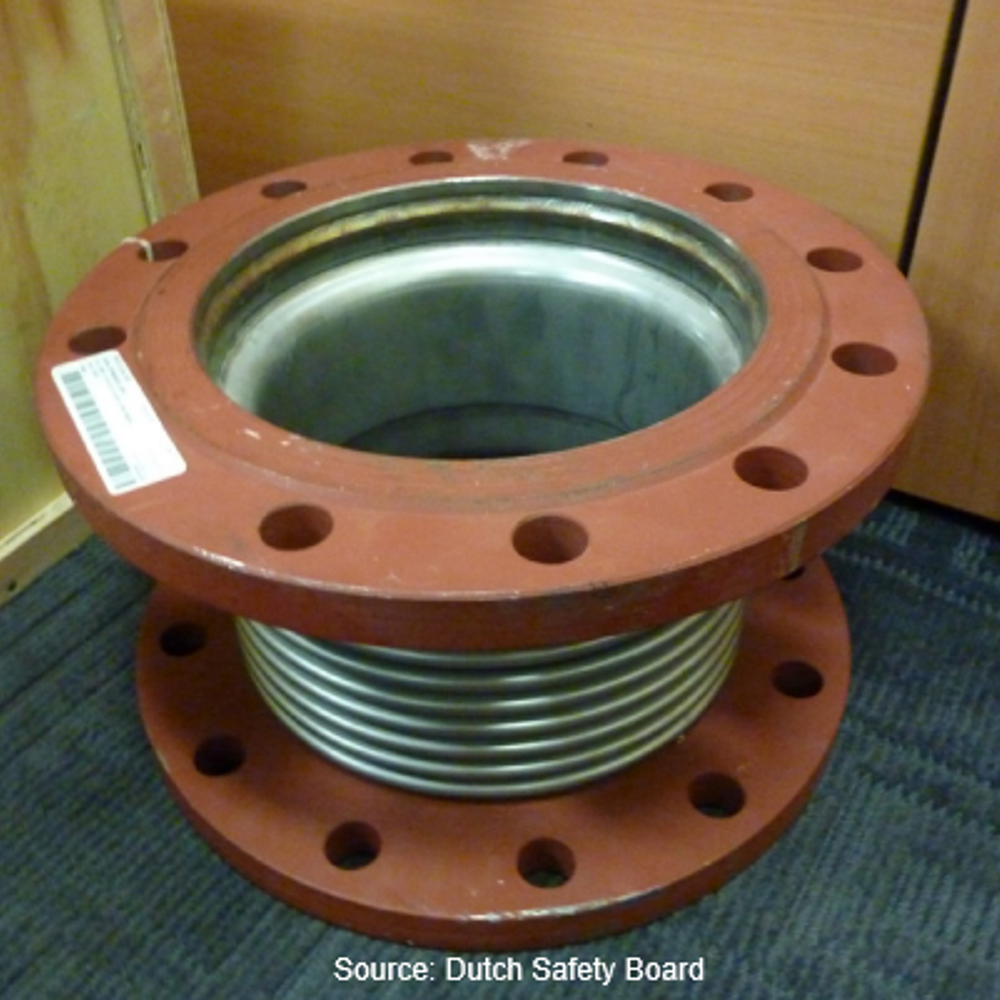Subsequent random inspection of vessels with similar expansion fittings as part of their steam piping system have highlighted the following issues:
- Some expansion fittings have not remained in compliance with the makers’ limits for axial misalignment or were found compressed/elongated beyond the makers’ recommendation. This has introduced unnecessary stress, without the steam system being under pressure.
- Some fittings were inaccessible due to being enclosed in permanent lagging.
- Pipework was no longer adequately supported, to prevent the unnecessary stresses on the fitting.
Immediate action recommended
The following should be carried out at the earliest opportunity:
- Ensure expansion fittings are listed and clearly marked on the steam system plans and inspected regularly to confirm that they remain compliant with makers’ limits for misalignment and are not excessively compressed or elongated beyond permitted limits.
- Check pipework at both ends of such fittings remains adequately supported to prevent undue stresses at time of installation and allow appropriate movement during service (considering the temperature variation of the pipe work which will cause the pipework to slide within the support clamps).
- Where such expansion fittings are not accessible due to insulation or lagging, such inaccessible locations should be identified and the lagging arrangement changed to make it removable for periodic inspection.
- Check that these fittings remain within their service limits and operational life.
- The direction of flow should be confirmed in accordance with makers’ guidance.
- Fitting should be compatible with the fluid (in this case steam) for the specific piping system.
Operating conditions and steam hammer
The investigation for this specific incident concluded that the primary reason for the catastrophic failure of the expansion fitting was due to steam hammer. This is a well-known phenomenon resulting from steam being introduced into a cold section of steam system pipeline or fitting (possibly with some condensation collected within), causing high-pressure shock waves.
It cannot be over- emphasised how essential it is that all persons on board responsible for operating any part of the steam system are suitably trained. They must be aware of the precautions to be taken before and while introducing steam into any part the steam system that has remained out of use and is colder than the steam temperature
How we can help
If you would like more details or need support with these requirements, please contact TechnicalExperts@lr.org.
Related resources
Investigation report: Fatal accident after rupture of expansion joint in steam pipe - Dutch Safety Board.









